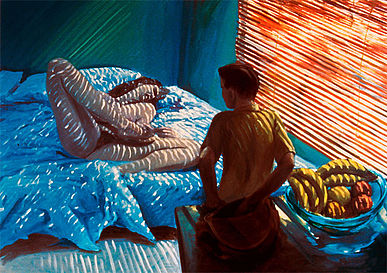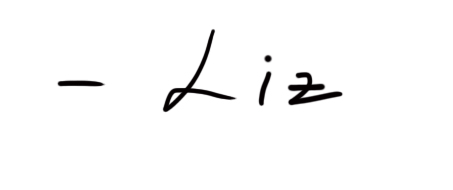Available for Purchase.
"*" indicates required fields
This submission is an inquiry of availability and details but does not guarantee a sale. Thank you for your understanding.

Eric Fischl, The Parade,/2006
Working toward that moment—what painters call the frozen moment—led me to a new way of narrative painting. Painting is about trying to get to that instant that is pregnant with some special kind of energy. Done right, there’s an exquisite tension in the painting that comes from a precise set of relationships—between forms on an abstract level and between people on an image level. Finding where to arrest the action, where to stop time, is where artistry lives. The most dramatic moments are the moments just before or just after something happens. The viewer entering the scene at those moments rushes to complete the narrative with his or her own associations and feelings.
—Eric Fischl, Bad Boy: My Life On and Off the Canvas
I remember when Eric Fischl first burst on the New York art scene at Mary Boone’s gallery in the early 80s. It was shortly after Julian Schnabel debuted his gimmicky broken plate paintings, which demonstrated the kind of vice grip conceptual art and non-traditional materials had on the art world at the time. By the early 80s plenty of pundits had arrogantly proclaimed painting “dead.”
Abstract painters—Bryce Marden and Elizabeth Murray come to mind—steadfastly carried the painting torch through those dark years. If the body abstract painting was anemic, the corpse of narrative painting was buried in a tightly sealed crypt, its coffin nailed communally by every modern art movement since Impressionism.
In 1982, it was hard to tell whether Fischl’s work was a refreshing jolt of energy or a reckless sneer to the increasingly abstruse art world.

Eric Fischl, Bad Boy, 1981
Oil on linen, 66 x 96″
(Courtesy Mary Boone Gallery)
Fischl stuck with his vision. Reports of painting’s demise turned out to be greatly exaggerated. During the last two decades of the 20th century, painting resurfaced with a vengeance. Resuscitated by painters like Fischl, Odd Nerdrum, Jack Beal, Alfred Leslie and others, figurative/narrative painting has been awakened from nearly a century-long slumber.Both memoir and manifesto, Bad Boy is a riveting read. Fischl knows his share of celebrities/ luminaries and many of them have contributed their own memories of the artist to the book.
Memoirists cannot often resist the urge to snipe. Fischl proves he is not beyond the snarky remark, though not enough of them to make the book a dreary gripe. While the memoir bits were engaging, I devoured the passages in Bad Boy devoted to the painting process and Fischl’s artistic philosophy. This particular passage describes the magic that is artistic “brilliance”:
To translate vision artist uses materials that are, for lack of a better word, alchemical. Paint, for example, has this wonderful, mysterious quality—a smell and a sensuous, velvety feel an inability to hold color and light long—that unlocks and speeds up one’s creative metabolism. Paint captures my every impulse—from my broadest conceptions to the tiniest text and tremors of my wrist.
Not every image comes to life. In fact, very few do. Often my resistance is too strong. I grip my brush too tightly. Or risk too much. But then there have been those moments when I’ve felt as if I’ve broken through. Like when I made the violent swipe of white primer in the “Bed” painting. Or realized that the action in sleepwalker was taking place at night. Or that the 11 year old in Bad Boy was stealing from the woman’s purse. These moments are not the result of genius for any kind of rational intelligence. They’re more like flashes of epiphany, a desperate surrender to voices from within, usually after I’ve exhausted every other option.

Eric Fischl—Tumbling Woman, 2002
Bronze. 37 x 74 x 50″
I have come to believe in the fundamental truth of this Fischl statement:
The notion that artists make art only for themselves I reject totally. It is kind of bullshit an artist tells himself when he is in his studio alone. Of course he wants to see himself in his own work, but that is not what he hopes will be the end result. He is looking for other people who will see their selves in his work. Artist create art because they are seeking resonance for their thoughts and feelings. They are seeking connection. Any artist who tells you otherwise also believes that and an astronaut goes to the moon only to satisfy his own curiosity…
Fischl occasionally propels readers into the troposphere:
The further art got away from the tradition of telling and retelling our dreams, reinvigorating our understanding of what it means to be human, what it means to us to be alive, the more it relinquished its central primacy in the culture. As artists focused on their own uniqueness, either as an idealization or as an existential tragedy, the language of art became more and more arcane, more private, and now can no longer claim to serve society the way it once did. Art is cultural glue. It binds us to each other by revealing what it is we share, what we have in common on the most intimate levels of our being. But in order for art to work, an audience has to be able to see themselves represented in the artist’s creation…
To rehabilitate the importance of the body in art, we have to come to terms with sex and with death. We have to come to terms with mortality, with how the body ages, with how are relationship to our needs and our fantasies in our dreams changes, with how our body deteriorates. We have to figure out what it means to die.
Freud contends: “It is indeed impossible to imagine our own death; and whenever we attempt to do so we can perceive that we are in fact still present as spectators.” Art shows us a path through life; it’s intriguing to think that it might also show us the way through death.
Here’s The Thing: Alec Baldwin interviews Eric Fischl
Dive Deep: Eric Fischl and the Process of Painting
Eric Fischl: 1970-2000
Paul Barolsky—“There is No Such Thing as Narrative Art”
James Elkins—“Time & Narrative”
Ernest Becker—The Denial of Death
A Painter’s Bookshelf reviews

0 Comments